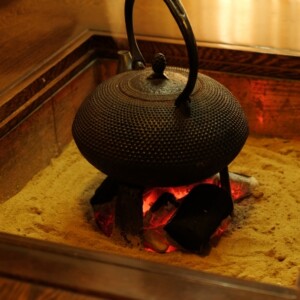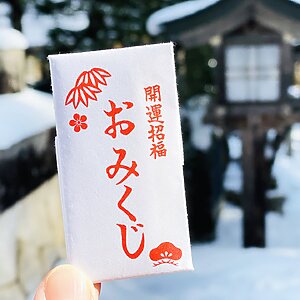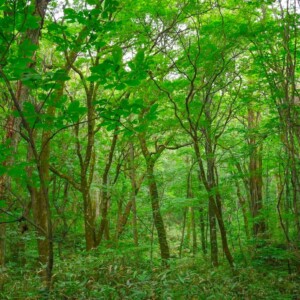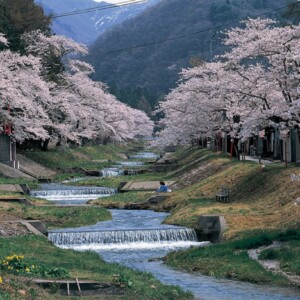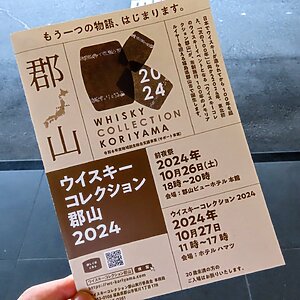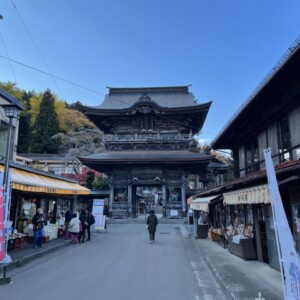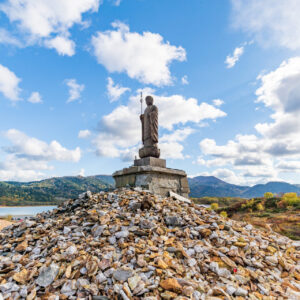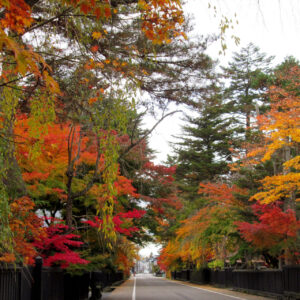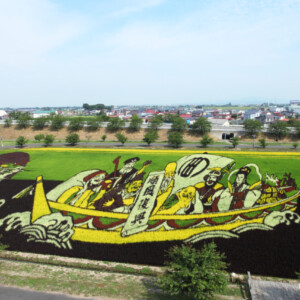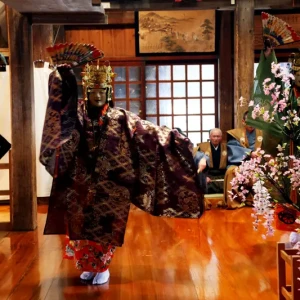
[Iwate Prefecture] Chusonji, a world heritage site famous as the temple of the third generation of the Oshu Fujiwara clan
table of contents
- 1 Chusonji Temple is said to have been founded by Jikaku Daishi Ennin.
- 2 About the name of Chusonji Temple
- 3 Oshu Fujiwara clan's third generation temple
- 4 After the fall of the Oshu Fujiwara clan, it continued to exist under the protection of Minamoto no Yoritomo.
- 5 During the Edo period, it became Sendai domain and was protected by the Date clan.
- 6 Chusonji Temple has regained its brilliance in modern times.
- 7 Konjikido is designated as a national treasure as a representative example of Jodo sect architecture.
Chusonji located in Hiraizumi-cho, Nishiiwai-gun, Iwate Prefecture, is the head temple of the Tendai sect of Tohoku. the outer temple of the Oshu 33 Kannon temples , the name of the temple is Kanzan, and the principal image is Shaka Nyorai.
Chusonji Temple is said to have been founded by Jikaku Daishi Ennin.
According to the history of Chusonji Temple, it began in 850 when Jikaku Daishi Ennin
However, to date, no reliable historical materials or excavation results have been discovered that support the founding of Jikaku Daishi Ennin, and it is believed that Fujiwara no Kiyohira, the first generation of the Oshu Fujiwara clan, founded the mountain in the early 12th century . Most people agree that the construction of a large-scale hall and pagoda to enshrine Shakyamuni Buddha and Taho Nyorai was the ``founding of Chuson-ji Temple.''
there is a ``Shijikairo'' that goes around Motsuji Temple in Hiraizumi, which was also founded by Jikaku Daishi Ennin, Risshakuji Temple in Yamagata Prefecture, and Zuiganji Temple in Miyagi Prefecture. It is said to be one of the constituent temples.
Link: Michinoku Ancient Temple Pilgrimage “Four Temple Corridors”
About the name of Chusonji Temple
Although there are various theories, the name of the temple ``Chusonji'' (the name of a Buddhist temple) was originally written the poet Saigyo visited during the Koji era (1142-1144) and wrote. It is said that this is the first time that the words ``Chuson and Shindokoro'' are mentioned.
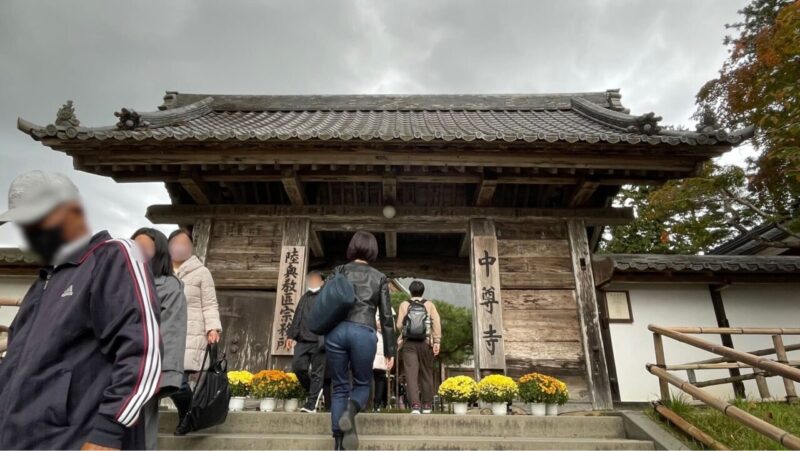
"Chuson" is interpreted to mean "located in the center of Oshu."
Oshu Fujiwara clan's third generation temple
As mentioned above, the temple dates back to the mid-9th century, but it is famous as the temple of the third generation of the Oshu Fujiwara clan, and has many cultural assets such as the Golden Hall and Heian period art and crafts.
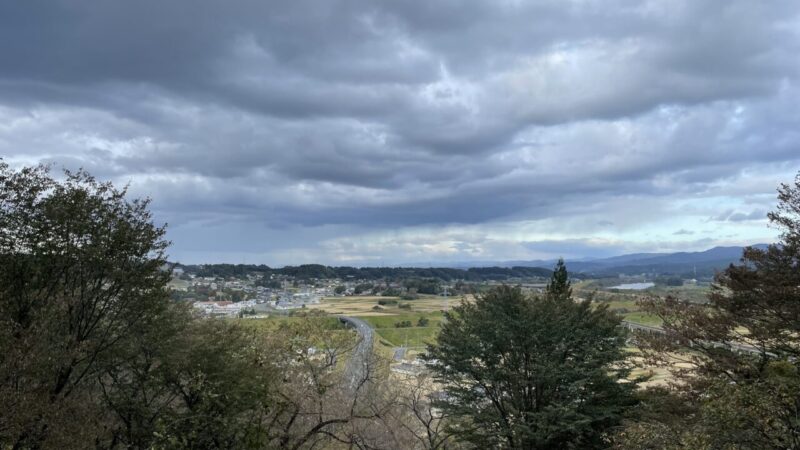
The Oshu Fujiwara clan established great power in the Tohoku region in the 12th century, and in 1105 AD, Fujiwara Kiyohira began the restoration of Chusonji Temple in Hiraizumi. Its purpose was to console the spirits of those who died during the War of the Nine Years and War of the Third Year, which occurred in the Tohoku region in the latter half of the 11th century. It was to build. Therefore, the actual creation occurred during this period.
Konjikido was completed in 1124. This hall was built by Kiyohira as his own mausoleum, and the remains of the third generation of Fujiwara and the head of the fourth generation, Motohira, are enshrined here.
After the fall of the Oshu Fujiwara clan, it continued to exist under the protection of Minamoto no Yoritomo.
In 1189, the Oshu Fujiwara clan fell. After that, it continued to exist as a temple requested by the Cloistered Emperor Toba under the patronage of Minamoto no Yoritomo.
In addition to the Konjiki-do Hall, Chuson-ji Temple at that time included ``Taho-ji'' where Shakyamuni Buddha and Taho Nyorai were enshrined, ``Shaka-do'' where 100 bodies of Shakyamuni Nyorai were enshrined, and ``Ryōji'' where wooden statues of the Buddhas of the Ryokai Mandala were enshrined. It is said that there was a hall called "Nikaido Hall" (Daichoju-in Temple) that enshrined an Amida Buddha statue approximately 9 meters high and nine Amida Buddha statues approximately 5 meters tall.
Although Chusonji Temple has survived the changes of the times, records remain that in 1337 there was a large fire, and most of the buildings, except for the Golden Hall, were completely destroyed.
During the Edo period, it became Sendai domain and was protected by the Date clan.
During the Edo period, as it became part of the Sendai domain, it received the patronage of the Date clan, and the hall was repaired and erected.
Later, from 1654, due to the trend of Shinto-Buddhist syncretism (a movement of merging and reconfiguring Japan's indigenous gods and Buddhist gods), Sendai's Sengakuin Temple became Bettoji Temple and came under its management. In 1665, it became a branch temple of Kan'eiji Temple in Edo.
However, when Basho Matsuo visited Chusonji in 1689 while on his way to the Oku no Hosomichi, he is said to have lamented seeing Chusonji in ruins, so the situation is said to be "management" in name only and close to "neglect". It may have been.
Chusonji Temple has regained its brilliance in modern times.
Later, in modern times, the main hall was rebuilt in 1909. In 1950, an academic investigation was conducted on the bodies of the four Fujiwara clans that had been enshrined in Konjiki-do for 800 years, and it was discovered that the heads enshrined there were indeed the four generations of the Oshu Fujiwara clan (Kiyohira the first, Motohira the second, Hidehira the third, It turned out that it belonged to the 4th generation Yasuhira).
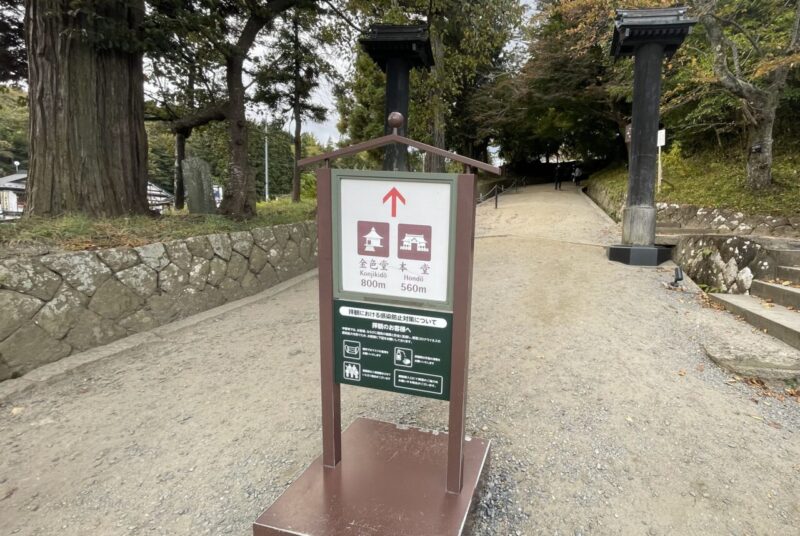
In 1962, Konjikido was dismantled and repaired, and completed six years later in 1968. The glory of the past has been revived in the present.
Konjikido is designated as a national treasure as a representative example of Jodo sect architecture.
For about 100 years, Hiraizumi enjoyed a flourishing dynasty-style culture. In 2011, the culture of Hiraizumi, including Chuson-ji Temple, was registered as a World Heritage Site and an Intangible Cultural Heritage as ``Hiraizumi - architecture, gardens, and archaeological ruins representing Buddhist land (Pure Land)''

Konjikido is a popular and well-known temple among tourists visiting Chusonji. Konjiki-do, an Amida-do hall with gold leaf stamped inside and outside the hall, is a representative example of Jodo sect architecture from the Heian period, along with Byodo-in Phoenix Hall, and has been designated as a national treasure In addition to the bodies and heads, there are burial goods and a total of 31 Buddhist statues enshrined inside the hall, all of which have been designated as national treasures and important cultural properties. It is also a valuable resource for learning about the art and cultural background of the Heian period.
In addition to Konjikido, the mountain air creates a majestic scenery along Tsukimizaka, the pilgrimage route that leads to Chusonji. There are many buildings to see, including the main hall, Fudo-do, a prayer hall built in 1977, and Sankozo, which houses over 3,000 cultural assets. Many ceremonies and memorial services are still held in the main hall, and viewing is possible from 8:30 a.m. to 5:00 p.m. (4:30 p.m. from November to February).
It is convenient to use the Tohoku Shinkansen to get to Hiraizumi, arriving at Ichinoseki Station in 2 hours and 20 minutes from Tokyo. Transfer to the Tohoku Main Line and arrive at the nearest station, Hiraizumi Station, in about 10 minutes. Tsukimizaka is about 1.6 km away, so depending on the situation, it might be a good idea to take a taxi.
Chusonji Temple<Information>
- Name: Chusonji Temple
- Address: 202 Hiraizumi Kinoseki, Hiraizumi-cho, Nishiiwai-gun, Iwate 029-4102
- Phone number: 0191-46-2211
- Official URL: https://www.chusonji.or.jp/



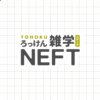
![[JR East Pass Trip: Day 2 Part 2] Intensive exploration of Hiraizumi! World Heritage Sites: Chusonji Temple and Kinjido Chusonji Temple Information Board](https://jp.neft.asia/wp-content/uploads/2022/12/IMG_3829-1200x675-1-150x150.jpg)
![The 10th journey of the anime "That's Journey" is a trip to Iwate Prefecture, a place associated with Kenji Miyazawa [Iwate Prefecture] galaxy railway night](https://jp.neft.asia/wp-content/uploads/2025/09/27594807_s-150x150.jpg)
![[Iwate Prefecture] That person might have gone too! ? 5 recommended power spots in Iwate Prefecture 26634518_m](https://jp.neft.asia/wp-content/uploads/2023/06/26634518_m-150x150.jpg)
![[Series: Tracing the narrow path of the depths ④] Arriving at Hiraizumi, the Pure Land of the three generations of Fujiwara Basho, a dream of Basho Oku no Hosomichi 4](https://jp.neft.asia/wp-content/uploads/2023/09/addf9e31ea8b62f6903d5ad9db53d39e-1-150x150.jpg)
!["The ruins of dreams for summer grass and soldiers," Takadate, the land where Minamoto Yoshitsune was over [Hiraizumi Town, Iwate Prefecture] Yoshitsune Minamoto](https://jp.neft.asia/wp-content/uploads/2022/06/Minamoto_no_Yoshitsune-150x150.jpg)
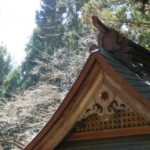

![Tateishi-ji Temple, a corner of the four temple corridors, including Chuson-ji Temple, Mokoshi-ji Temple, and Zuigan-ji Temple [Yamagata Prefecture] Yamadera Risshakuji Temple](https://jp.neft.asia/wp-content/uploads/2016/09/26668581_m-150x150.jpg)
